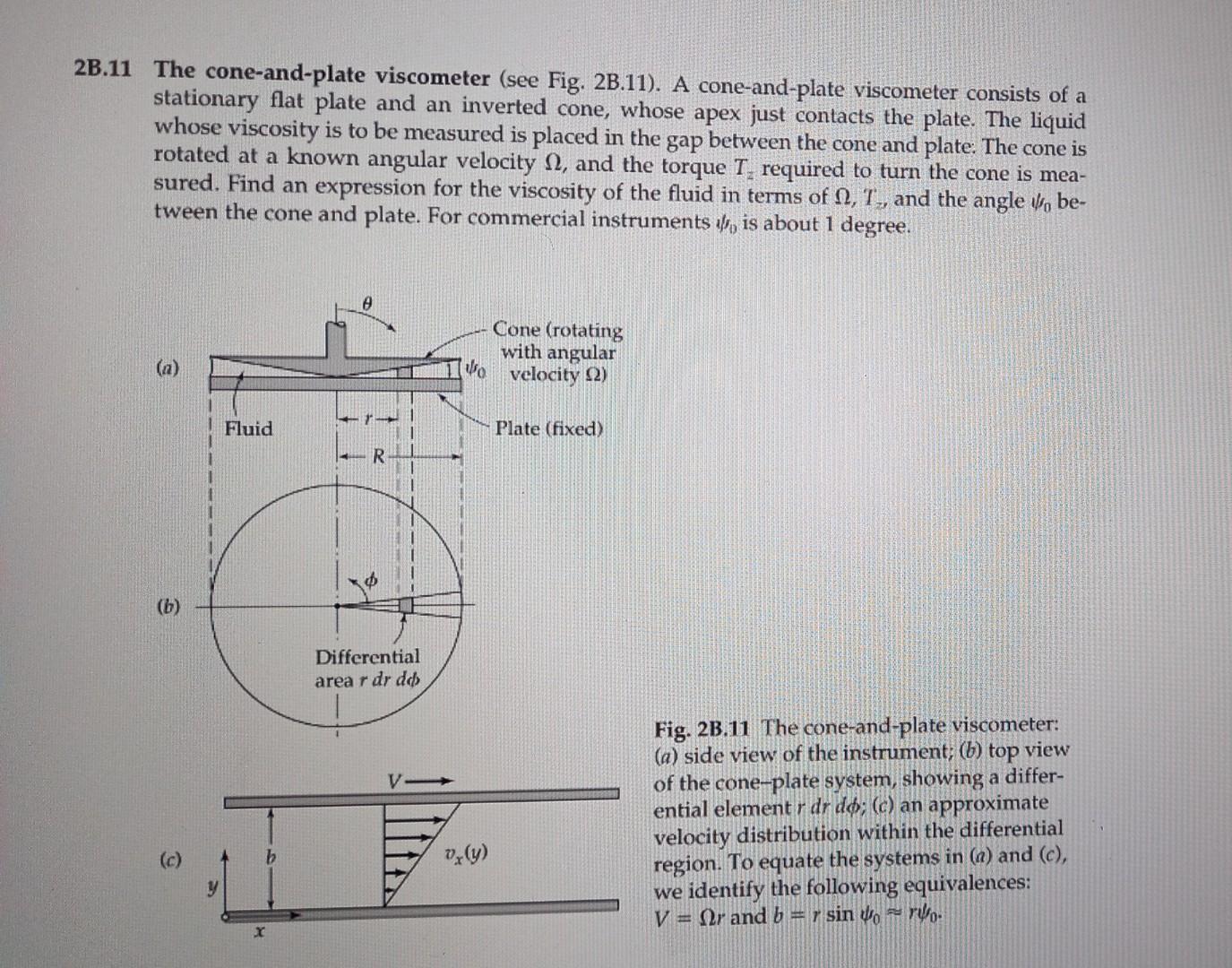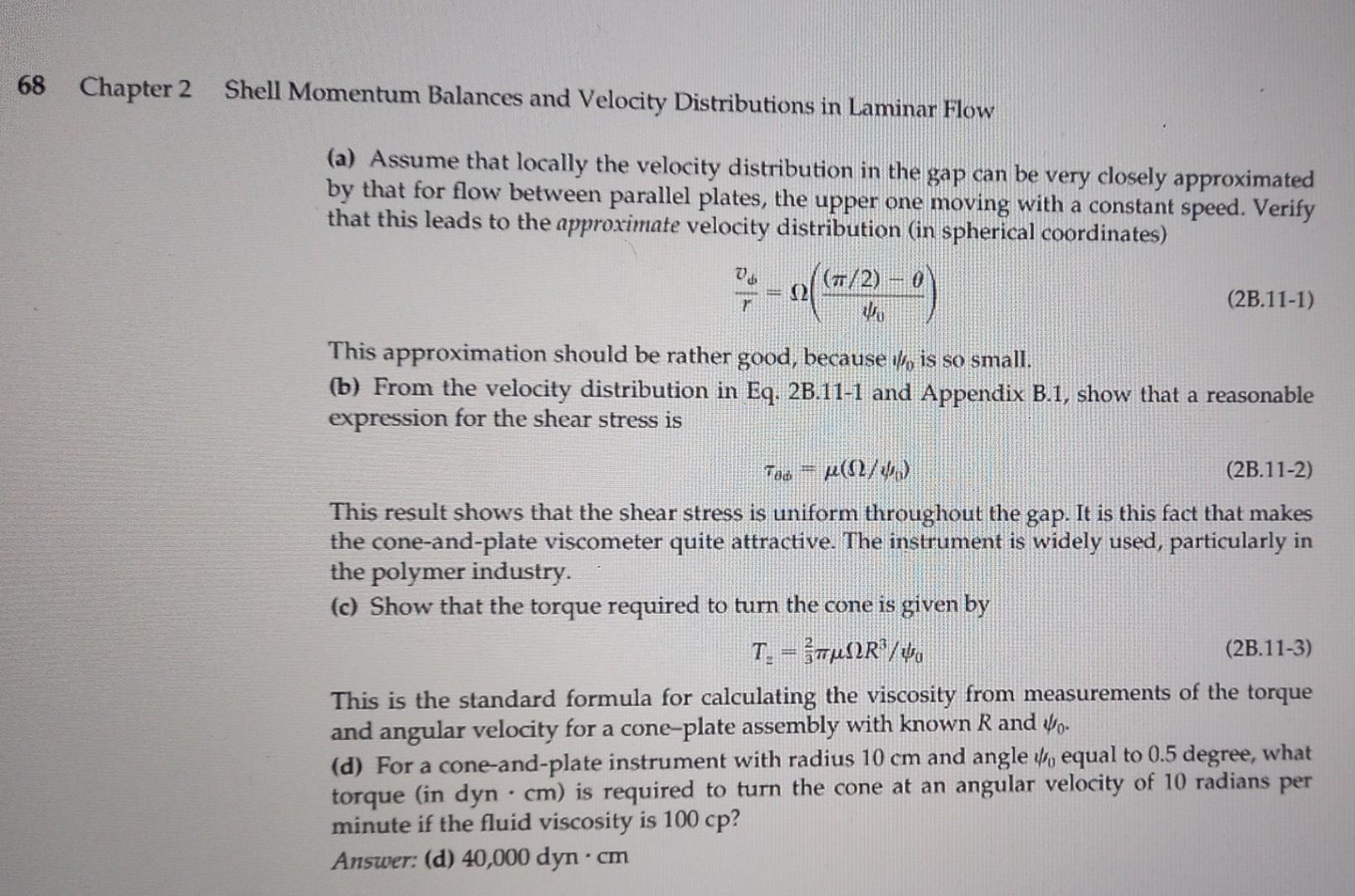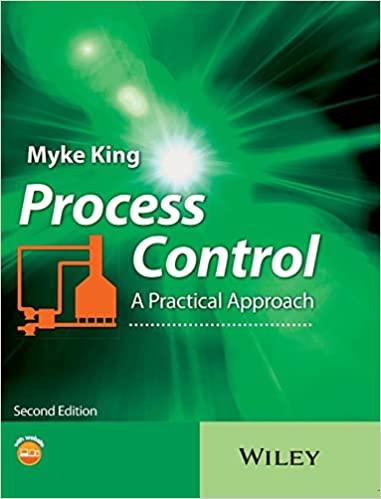Answered step by step
Verified Expert Solution
Question
1 Approved Answer
11 The cone-and-plate viscometer (see Fig. 2B.11). A cone-and-plate viscometer consists of a stationary flat plate and an inverted cone, whose apex just contacts the


11 The cone-and-plate viscometer (see Fig. 2B.11). A cone-and-plate viscometer consists of a stationary flat plate and an inverted cone, whose apex just contacts the plate. The liquid whose viscosity is to be measured is placed in the gap between the cone and plate: The cone is rotated at a known angular velocity , and the torque Tz required to turn the cone is measured. Find an expression for the viscosity of the fluid in terms of ,T, and the angle 0 between the cone and plate. For commercial instruments 0 is about 1 degree. Fig. 2B.11 The cone-and-plate viscometer: (a) side view of the instrument; (b) top view of the cone-plate system, showing a differential element rdrd;(c) an approximate velocity distribution within the differential region. To equate the systems in (a) and (c), we identify the following equivalences: V=r and b=rsin0=r0 Momentum Balances and Velocity Distributions in Laminar Flow (a) Assume that locally the velocity distribution in the gap can be very closely approximated by that for flow between parallel plates, the upper one moving with a constant speed. Verify that this leads to the approximate velocity distribution (in spherical coordinates) rv=(0(/2)) This approximation should be rather good, because 0 is so small. (b) From the velocity distribution in Eq. 2B.11-1 and Appendix B.1, show that a reasonable expression for the shear stress is =(2/0) This result shows that the shear stress is uniform throughout the gap. It is this fact that makes the cone-and-plate viscometer quite attractive. The instrument is widely used, particularly in the polymer industry. (c) Show that the torque required to turn the cone is given by Tz=32R3/0 This is the standard formula for calculating the viscosity from measurements of the torque and angular velocity for a cone-plate assembly with known R and 0. (d) For a cone-and-plate instrument with radius 10cm and angle 0 equal to 0.5 degree, what torque (in dyn cm ) is required to turn the cone at an angular velocity of 10 radians per minute if the fluid viscosity is 100cp ? Answer: (d) 40,000dyncm
Step by Step Solution
There are 3 Steps involved in it
Step: 1

Get Instant Access to Expert-Tailored Solutions
See step-by-step solutions with expert insights and AI powered tools for academic success
Step: 2

Step: 3

Ace Your Homework with AI
Get the answers you need in no time with our AI-driven, step-by-step assistance
Get Started


